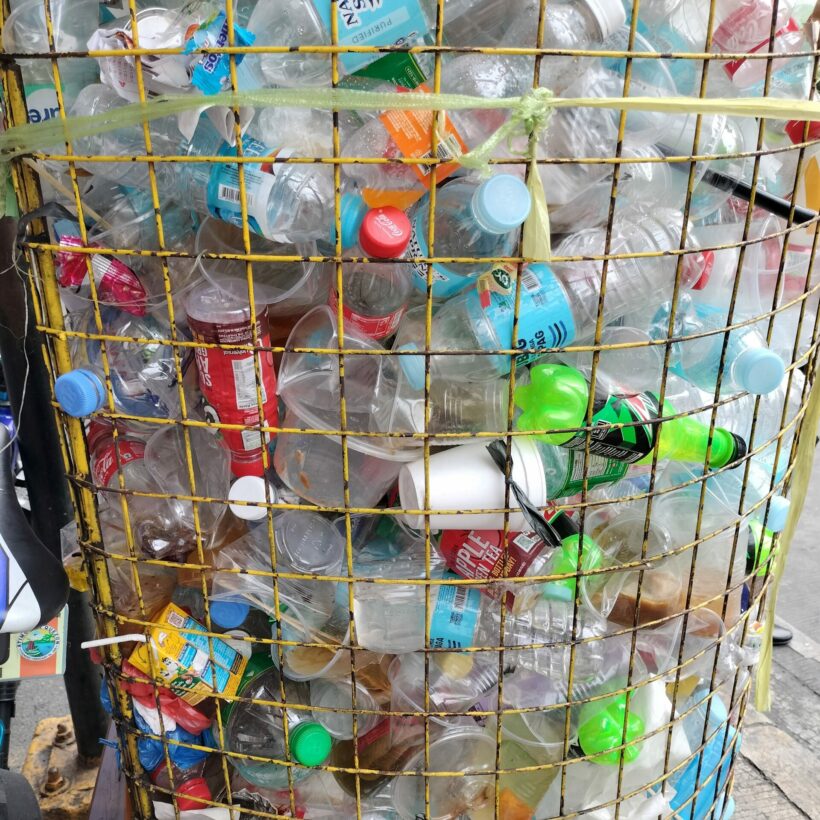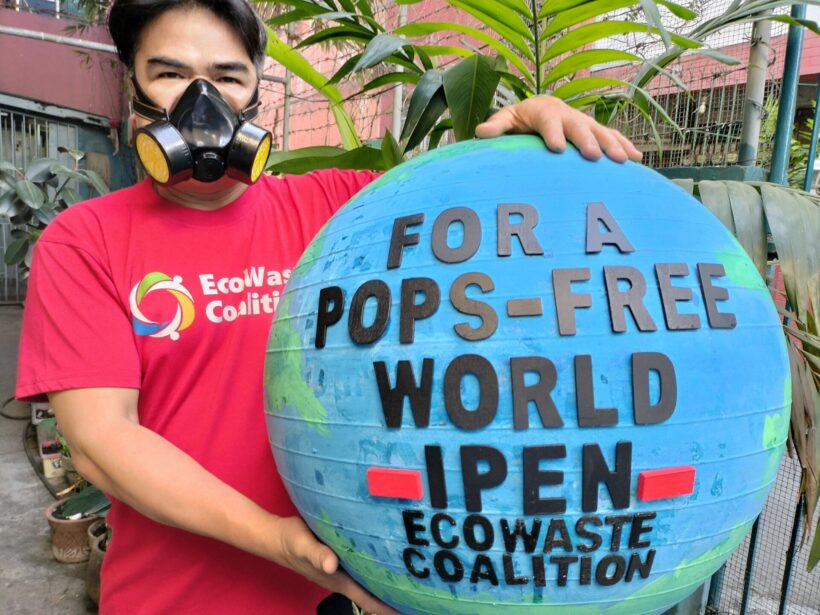7 May 2023, Quezon City/Davao City. The EcoWaste Coalition and the Interfacing Development Interventions for Sustainability (IDIS) lauded the decision last Friday by over 120 countries to add UV-328, Dechlorane Plus (DP) and methoxychlor among the highly toxic chemicals targeted for global elimination under the Stockholm Convention on Persistent Organic Pollutants (POPs), which the Philippines ratified in 2004.
At the 11th meeting of the Conference of the Parties (COP-11) to the Stockholm Convention, government negotiators agreed to add plastic additive UV-328 and flame retardant DP (also often used in plastics) and the pesticide methoxychlor under Annex A of the treaty, which is a growing list of the worst POPs that will be subjected for a global ban. However, the COP also agreed to some exemptions that will permit the continued use of UV-328 and DP and cause harm to health and the environment for decades.
As members of the International Pollutants Elimination Network (IPEN), the EcoWaste Coalition and IDIS participated in a global study that found UV-328 in spilled or lost pre-production plastic pellets found on beaches and in recycled plastic pellets collected in 35 countries, including the Philippines. A related study also found UV-328 in children’s toys and hair accessories, which is particularly alarming due to its toxicity and endocrine-disrupting effects.
“We laud COP-11 for agreeing to get rid of DP, UV-328 and methoxychlor in keeping with the promise of the Stockholm Convention to protect human health and the environment from these highly dangerous chemicals. Eliminating these POPs and targeting additional POPs for action is essential to redirect the economy onto a non-toxic circular path and ensure environmental health and justice across the globe,” said Aileen Lucero, National Coordinator, EcoWaste Coalition.
Atty. Mark Peñalver, Executive Director of IDIS, also commended the COP-11, saying “The decision to list UV-328 and DP for global elimination will strengthen civil society’s push at the national level to prohibit the use of toxic chemical ingredients in plastics and phase out products and packaging materials containing substances that are hazardous to human beings, wildlife and the ecosystems.”

Several countries also called for specific requirements that would make it possible to identify materials and wastes containing DP and UV-328. However, while there are provisions in the Convention to identify these “to the extent practicable,” some Parties were strongly opposed to including requirements for labeling or other means of identification in these two listing decisions. Instead, the Convention’s scientific review committee is tasked with evaluating options for identifying POPs in products and waste.
“The COP took an important step today toward protecting human health and the environment from three chemicals linked to serious health conditions and threats to biodiversity,” said Dr. Sara Brosché, a Science Advisor with IPEN. “But we are disappointed that financial interests caused unnecessary and dangerous exemptions that will lead to ongoing toxic exposures, especially for waste workers and communities in low- and middle-income countries where materials containing these chemicals often end up.”
“It is clear that some countries are reluctant to put the necessary systems in place that would help keep track of these hazardous materials. The only solution is to move quickly to eliminate these and other toxic chemicals and adopt safer alternatives,” she pointed out.
During the negotiations this week, IPEN and its members from the Czech Republic, Kenya and Thailand released important studies to support decisive actions at the global level on banned and candidate POPs.
An IPEN study with Prague-based Arnika Association and Ecological Alert and Recovery – Thailand (EARTH) found high levels of DP in the blood, food chain, and communities of Thai plastic e-waste workers. DP often serves as a flame retardant in plastics used for electronics and the auto industry, but the study showed that when these toxic plastics are dismantled for recycling, e-waste workers suffer significant exposures to the toxic flame retardant. Compared to a reference group of nearby organic farm workers, on average the waste worker’s blood contained 40 times higher levels of DP.
“The results of our study show contamination of toxic chemicals in the local food chain and the blood of e-waste workers, underscoring the importance of transparency in the regulation of chemicals in electronic and plastic waste,” said Thitikorn Boontongmai, EARTH’s Toxic Waste and Industrial Pollution Program Manager. “With labeling of toxic chemicals, workers and communities throughout the plastic waste stream can be alerted when they need to take precautions. Everyone has a right to know when toxic chemicals threaten their bodies, their food, and their health.”
Another IPEN study with the Centre for Environment Justice and Development (CEJAD) released during the week of negotiations found high levels of banned POPs in recycled plastic toys and other products purchased in Kenya, demonstrating the lack of transparency needed for in tracking and informing exposed communities and consumers when waste and products contain the highly toxic chemicals.
Additional Information:
UV-328 is toxic to mammals and can cause specific organ toxicity to the liver and kidneys upon repeated exposure. It can also cause anti-androgenic effects, alterations in reproductive organs and changes in enzymatic activity. DP, on the other hand, has adverse effects on the liver, endocrine system, and neurodevelopment. It is found in human cord blood serum, placental tissue, and breast milk, thus posing a threat to the health of the developing child. Exposure to methoxychlor, an organochlorine pesticide, can cause anxiety, confusion, dizziness, fatigue, headache, “pins and needles” in arms or legs, muscle twitching and tremor, nausea and vomiting. Higher levels of exposure can cause convulsions, passing out and even death.
References:
https://ipen.org/documents/quick-views-conferences-parties-stockholm-basel-and-rotterdam-conventions-2023
https://ipen.org/sites/default/files/documents/brs_qvs_2023_en_web.pdf
https://ipen.org/sites/default/files/documents/ipen-uv328-research-update-v1_2-en.pdf










